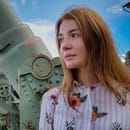Inspiration drawn from my last visit to Helsinki Art Museum (HAM) has made me think of the multifaceted nature of the world. How many worlds are there? Do we know them, think about them, notice them? It surely sounds bizarre and complicated if you have never come across the thought. However, there are plenty of them, and most of the time they are either hidden from the human eye or, because of their insignificance, just left unnoticed.
This spring, HAM is honored to hold an exhibition of one of the contemporary Finnish photographers and visual artists, Jussi Kivi. Born in Helsinki, Finland on 2 October 1959, Kivi is known for environmental art, his unusual explorations, and unique visions. The exhibition entitled Deep Down Under is a collection of maps and photos of caves, tunnels, rocks, forests and abandoned sites captured in Helsinki and outside.
My first introduction to his work started right away I entered an exhibition room of the museum. Little did I know that dark-colored photos, some (at first sight) incomprehensible schemes would turn out to be a reflection of another world: deep, with its own stone art and life rules.
The first few pictures I found myself looking at were the schemes of underground service tunnels and abandoned facilities. The places people usually feel threatened about, looking like they are calling some spirits from depths of the underworld. Damp and cold, they represent a dangerous environment with stony and bumpy roads. To see the unseen things covered with darkness, Kivi takes his pocket lamp and camera and goes on adventures… and now he is not only an artist but also a researcher, a discoverer of another world, the only one of his kind.
Tartaros, map projection stopes, and upper levels
Underground stope with a column and a small trickle (level +195)
Next, I reached the series of his photo artwork called Subterranean Negatives. The series is the depiction of the fuel reserve tunnels, stopes, and caves, however, captured during the winter time. The striking aspect of the photos is light. “It is not the light of the sun and its rays, nor it is a shimmer of the moon beams”, says Kivi. The power of this light is in low temperature expressed through clear whiteness and diffusiveness. On the one hand, I felt something cosmical, incredibly beautiful but on the other something completely remote, uncharted, and dangerous where no man had ever set foot. And if by any chance he had, he had to be strong, spiritually in particular to get a right to live there. It is worth noting that the names given to photos are symbolic, powerful, and emotionally charged (e.g. Big stope filled with ectoplasm; Hellhole downwards; Mountainous view of giant stope known as the Cave of Trolls), serving as proof of some other, unknown living there spiritual energy or even mythical creatures.
Subterranean Negatives: Big stope filled with ectoplasm
Subterranean Negatives: Hellhole downwards
The final striking set of photos brought me to the world of strangeness. Calling it Weirdland, Kivi shows us places where everything that appears normal is seen as strange, and all that is strange — normal. So, where to find Weirdland? Everywhere, in sites of mass destruction, abandoned destruction complexes, felled forestlands, sewers and other demolition sites. Kivi writes that Weirdland is a continuation of wasteland. However, a spirit originating there is far from ordinary one. It already looks mutilated to a new visitor, left behind and possesses some unknown character. “Terrible beauty” is what Kivi uses as an inspiration from the Romantic heroes of art history such as Caspar David Friedrich and John Martin.
Kiviöli, Estonia 2010
Prison in Rummu, Estonia, semisubmerged landscape, 2015
If you feel like exploring the world through the lens of Jussi Kivi’s art, you can visit his free exhibition taking place at HAM from 26.1.2018-29.7.2018. More information can be found here.
Photo credit: Jussi Kivi official website
Resources:
https://www.hamhelsinki.fi/jussi-kivi-taiteessa-on-oltava-aina-ihmeen-ul…



